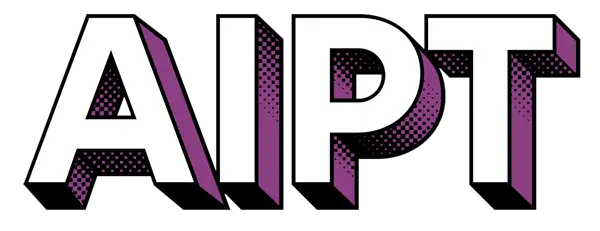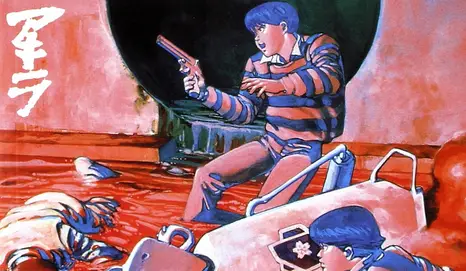I’ve always wanted to read Katsuhiro Otomo’s Akira. It’s been recommended by practically everyone and often ranks alongside the likes of Stan Sakai’s Usagi Yojimbo, Jeff Smith’s Bone or Frank Miller’s Daredevil as “one of those comics you should read if you really like comics”.
Akira Vol. 1 (Kodansha)

But before I get into the first volume of Otomo’s six volume series, I have to address something for posterity’s sake.
*A note on this edition
When I picked up my copy of Akira Volume 1, my initial reaction was “Oh no, it reads from left-to-right.” In case you don’t know, Japanese comics read from right-to-left. Typically, if you see a manga and it reads left-to-right, then that means the publisher flipped the artwork and now everything is “backward”.
I’ve got some bad memories of that sort of shit. I recall reading Kia Asamiya’s Batman: Child of Dreams, where Two-Face’s halves were on the wrong sides. Worst was Star Wars: The Manga, where everything you remember from the movie happens… in the opposite direction.
On a more ethical level, it’s a case of changing the artist’s work, often without their approval, and can lead to confusion as the whole work feels like you’re reading it via mirror reflection (because you are).
Akira is a bit more complicated than just the art being flipped and calling it a day.
The artwork has not been flipped on many pages, but instead, the layouts have been rearranged. So the art reads the way Otomo intended it, but the panels are on the opposite sides of the page. In other pages, the art has indeed been flipped, but usually on pages where the direction the characters are moving is insubstantial.

Script translation and lettering has also changed between publishers (after Epic, Dark Horse released the series, and now Kodansha has the rights). Kodansha is the Japanese publisher of the series, as well as its current US publisher, so it stands to reason they aren’t half-assing one of their most renowned series.
I think Akira is the “exception to the rule”, as it were. It reads left-to-right, but the new layouts were overseen by the creator and given his seal of approval. You shouldn’t have anything to worry about.
Review
The story takes place in Neo Tokyo, 2030 AD. Following an explosion that destroyed Tokyo and set off World War III, society has pretty much collapsed in Japan. Neo Tokyo, in particular, is a metropolitan hellhole of Blade Runner proportions where the streets are terrorized by biker gangs.
Kaneda leads one of these gangs, along with his friends Yamagata, Kai and the scrawny Tetsuo. After an encounter with a shriveled telekinetic child named Takashi, Tetsuo is injured and abducted by the Colonel of a mysterious military agency. Kaneda wants to find out what happened to his friend and joins Kei, a member of a terrorist faction out to free Japan from its fascist control.
After many chases and close calls, the pair find Tetsuo, but he has changed. Now gifted with the powers of a mysterious entity known as “Akira” (who was also behind the explosion that leveled Tokyo), Tetsuo has gone off his rocker and taken control of a rival gang called the Jokers. Kaneda aims to take his crazy friend down a peg and rallies the other biker gangs in Neo Tokyo.

This may explain why everything from the first hour (of the 2-hour movie) can be found in this first volume of the series. Now, I assume (ASSUME) that the last hour of the movie is going to be covered in the final volume or so of the comic (unless it ends completely differently, which might be the case). That means everything between volumes 1 and 6 is going to be completely new to me.
For a novice, that’s actually a pretty good thing. The familiarity to those who have seen the film helps attract readers with this introductory volume rather than toss them into the deep end right from the getgo with stuff they don’t recognize. In fact, for the scenes that made the transition from page to screen, the adaptation is so precise it can feel like you’re looking at storyboards.


While there is a “seen it” quality to this first volume, just about every sequence you’ll recognize from the film has an extra helping of content and context behind it to flesh things out. The decompression of a six-volume comic series as compared to the compression of a two-hour film is no doubt the culprit behind this quality.
For instance, much of this opening chapter revolves around drug capsules and experimental medicine (a super methamphetamine that is the only thing capable of controlling Tetsuo’s awakening power). The capsules and the drugs were mentioned offhandedly in the film, but play a much larger role in the comic. The Colonel and his military forces spend much of this volume trying to track Kaneda down, as he stole a new drug capsule from Takashi when he encountered him at the start of the book, and likewise, Kei’s resistance movement want him to fork over the capsule, too. Ultimately, Tetsuo ends up wanting it so he can regain control of his abilities.
Much to my surprise, a LOT of this story revolves around “who’s got the pill” and “who wants the pill”.
The Joker gang also take a large role in this volume, fleshing out the landscape of the rival biker gangs and giving us a more in-depth feel for this urban cesspool we’re being thrown into. In the last third of this volume, Tetsuo seizes control of the Jokers and begins consolidating gang power throughout the city, leading to the first confrontation between Kaneda and his old friend. While the Jokers are taken out of the picture by the end of this chapter (and the whole deal with the pill is ultimately resolved), the actual biker gang aspect plays a much larger part in this telling of the story.
As for the characterization, the comic version is both better and on par with the movie adaptation, at least for certain personalities.
Kaneda is MUCH rougher here than in the movie. Since he’s the leader of a biker gang that brains their enemies with lead pipes, he isn’t exactly a nice guy. When he first meets Takashi, who is a KID, he immediately wants to beat the shit out of him. He’s also a pretty nasty womanizer, sleeping with the school nurse in order to score drugs and, in one scene, forcing himself on Kei who has to fight him off.

Regarding Tetsuo, when I said that some characters were on par with their movie portrayals, I was mostly thinking of him. In the film, we don’t see much of him before he’s infected (or whatever) by Takashi, sent to a hospital and promptly corrupted by Akira’s power. He goes from “zero” to “nuts” practically behind the scenes. When watching the film, I just assumed this was a matter of economy and his transition would be much more gradual and sympathetic in the source material.
Nah. It happens pretty much the same way. We see very little of Tetsuo across the first hundred or so pages of Volume 1. He’s taken by the military after the crash at the start and when he finally comes back, he’s freakin’ bonkers and out to kill everyone. His change doesn’t come with much impact because we saw very little of what he was like before the transformation. I assume somewhere in the next five volumes we’ll see more of his back story, but I’ve been assuming a lot, so far.
The bigger victims of characterization are Yamagata and Kai, the two ancillary members of Kaneda’s gang. Yamagata’s the big guy and Kai’s the little guy and that’s about it. In fact, I want to say Kai doesn’t even have his name spoken once throughout this entire volume. I had to look it up on Wikipedia. Also, Yamagata does not survive as long in the comic as he did in the movie, so we won’t be getting much characterization out of him. Hopefully Kai steps up in future volumes.
Akira‘s biggest draw, though, is not its unevenly developed characters or confounding plot, but Otomo’s artwork. This guy can layout a page like nobody’s business. The energy and intuitiveness of his work ranges from both the complex to the simple. For instance, check out this awesome sequence involving Kaneda stealing a truck in order to flee from a group of soldiers.

Now, check out Yamagata’s death scene, when Tetsuo uses his telekinetic powers to make his former ally’s head explode.

It’s simple, but very lively. Also gory, but the execution is inspired, meaning it doesn’t just rely on the shock value of an exploding head.
As much as I enjoyed this first volume of Akira, I’m looking forward to the next installments even more. I want to see all the “new” content that didn’t make it into the movie and hopefully see some of these characters fleshed out. The good news is that I have the other five volumes, so I can jump right into them immediately.
Join the AIPT Patreon
Want to take our relationship to the next level? Become a patron today to gain access to exclusive perks, such as:
- ❌ Remove all ads on the website
- 💬 Join our Discord community, where we chat about the latest news and releases from everything we cover on AIPT
- 📗 Access to our monthly book club
- 📦 Get a physical trade paperback shipped to you every month
- 💥 And more!












